Rob Wilson makes a case for the importance of traditional values in landscape photography.
In recent years, I have despaired a little at landscape photography. Please do not get me wrong, I adore the genre and it stirred my earliest interest in photography. Nonetheless, it fills me with frustration. If you visit the photography website 500px and search for ‘Antelope Canyon’, your screen will fill with an almost uncountable number of images. Not only is the count enormous, they all look almost identical, whether it be warm colours or toned black and white, light shining through dust particles or a waterfall-like flow of dust. I scrolled through this heap of images and not once did I find anything interesting or original. However, these images remain wildly popular with many of them achieving 500px’s cherished pulse of 99. The canyon is clearly a place of images for the masses.
It is not only Antelope Canyon. You get a similar result if you search for ‘Kirkjufell’, a mountain in Iceland. There is, I concede, somewhat more variation in the results as the mountain landscape affords many more alternative viewpoints, but this is still a place that has been photographed to death with little innovation.
Now, if you have your own favourite photograph of the canyon or mountain and are about ready to close this page and never return to my column again, let me be clear that this is not about you. I freely admit that if I visited these places, I would attempt to get those same images. After all, the desire to get the picture postcard shot is a very human response. My problem comes when you sell a dull photograph of Antelope Canyon for US$6.5 million. In 2014, this is what Peter Lik claimed to have done with a banal monochrome image called Phantom. Robert Adams, in his endlessly quotable essay Truth and Landscape, told us that landscape photographs should contain “three verities – geography, autobiography, and metaphor”. I suppose that Phantom contains the first, but I find none of the others present. This is perhaps where my despair began.
This despair goes deeper still. I even find the work of many talented and committed modern landscape photographers uninteresting. I look at many an image which may appear to show the truth and realise that what is before me is not a reflection of reality but an idealised, colour-saturated, and often formulaic fantasy world. I long to see images that contain Adams’s three truths. My mind frequently turns to photographs with the power of Peter Dombrovskis’s Morning Mist, Rock Bend Island, a picture I regard as Australia’s greatest; the ground-breaking work of the early landscape pioneers, like the Carlton Watkins image that heads this article; the majesty of Ansel Adams’s Moonrise, Hernandez; the serious and quiet beauty in Robert Adams’s The New West; or the moods in Fay Godwin’s images of the English Lake District and Scottish Highlands.
Despite my frustrations, Adams’s “verities” can still be found, and I am happy to give some examples. It delights me no end that these can be found in our own FRAMES community.
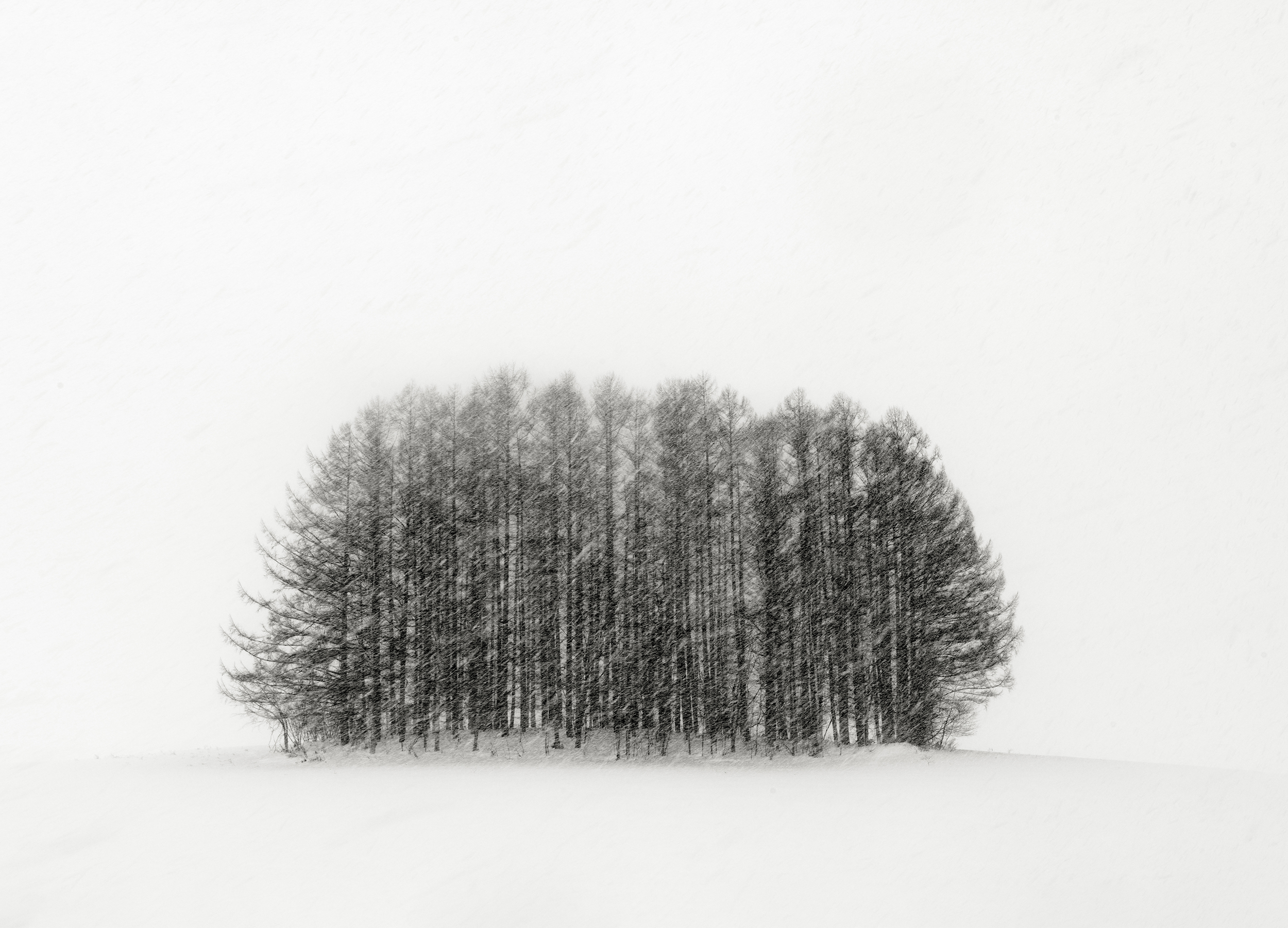
One of the few modern landscape photographers whose work I find compelling is Michael Kenna, and Paul Gallagher’s Trees in Snowstorm immediately brings his images to mind. This is also a clear example of Adams’s three truths in a landscape. The wintery geography is obvious and needs no further discussion, but you can feel the autobiographical element: the photographer struggling in the snow with frozen fingers trying to manipulate his equipment easily comes to mind. There are also any number of metaphors here. For me, it is one of resilience and loneliness. These trees are isolated, but their strength when facing hostile weather is evident. It is a lovely image and one that I would happily place on my wall.
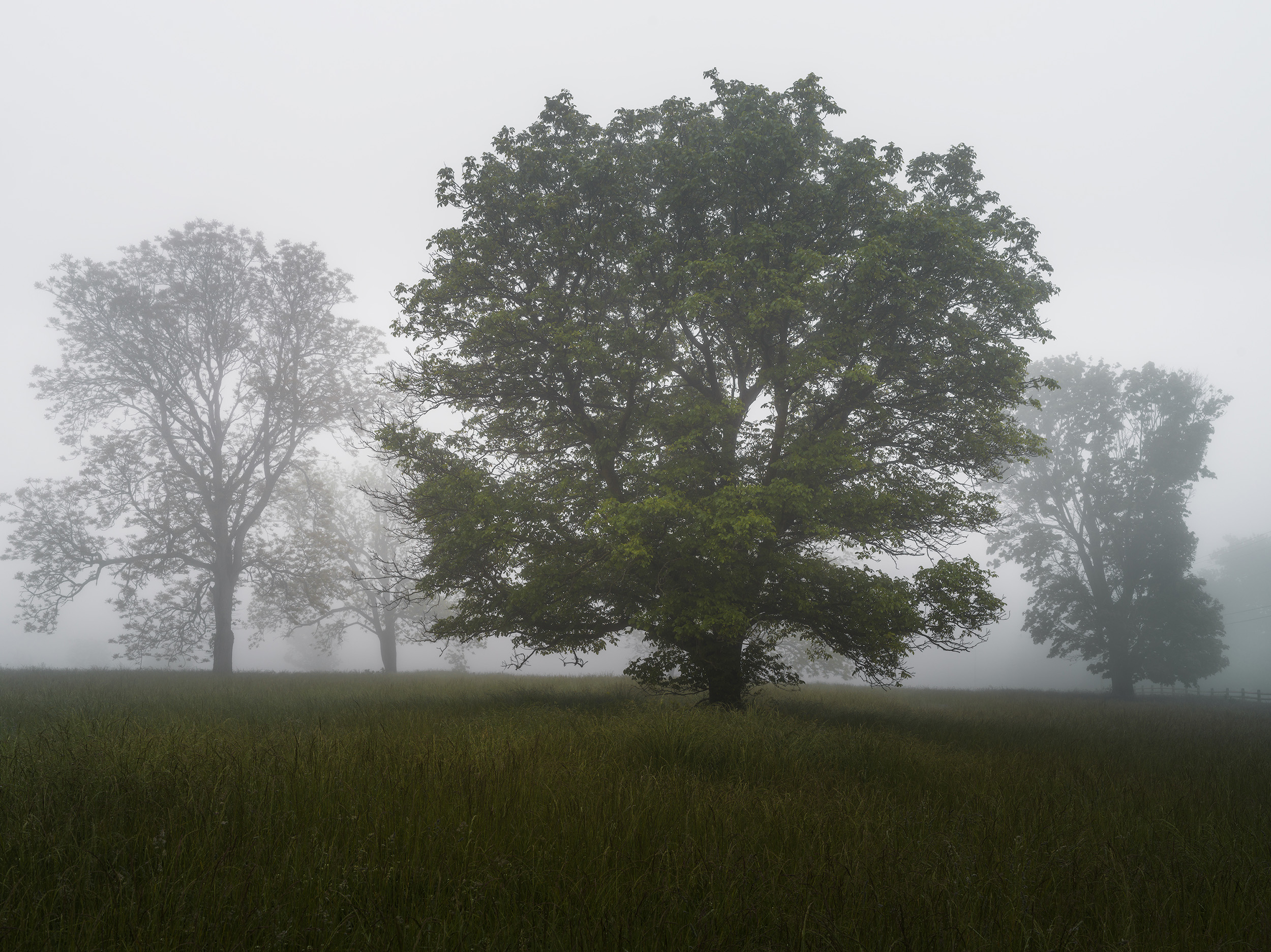
This image, A Kiss of Fog, is all about the story of the geography. It is a simple yet beautiful photograph of a tree in fog. However, with the additional knowledge of its location, it becomes something even greater. This is a melancholy place of ghosts stranded in the fog. Over 22,000 lives were lost here on the bloodiest day on American soil in September of 1862, and those lives haunt the image. Clark’s image shows us that even the most blood stained of locations eventually return to peace, yet the photograph quietly demands that we consider its meaning and significance. He has photographed this place frequently and his knowledge and understanding of the location are evident. Landscape photography does not need to be overly demonstrative or spectacular to be wonderfully effective, and this image exemplifies this perfectly.
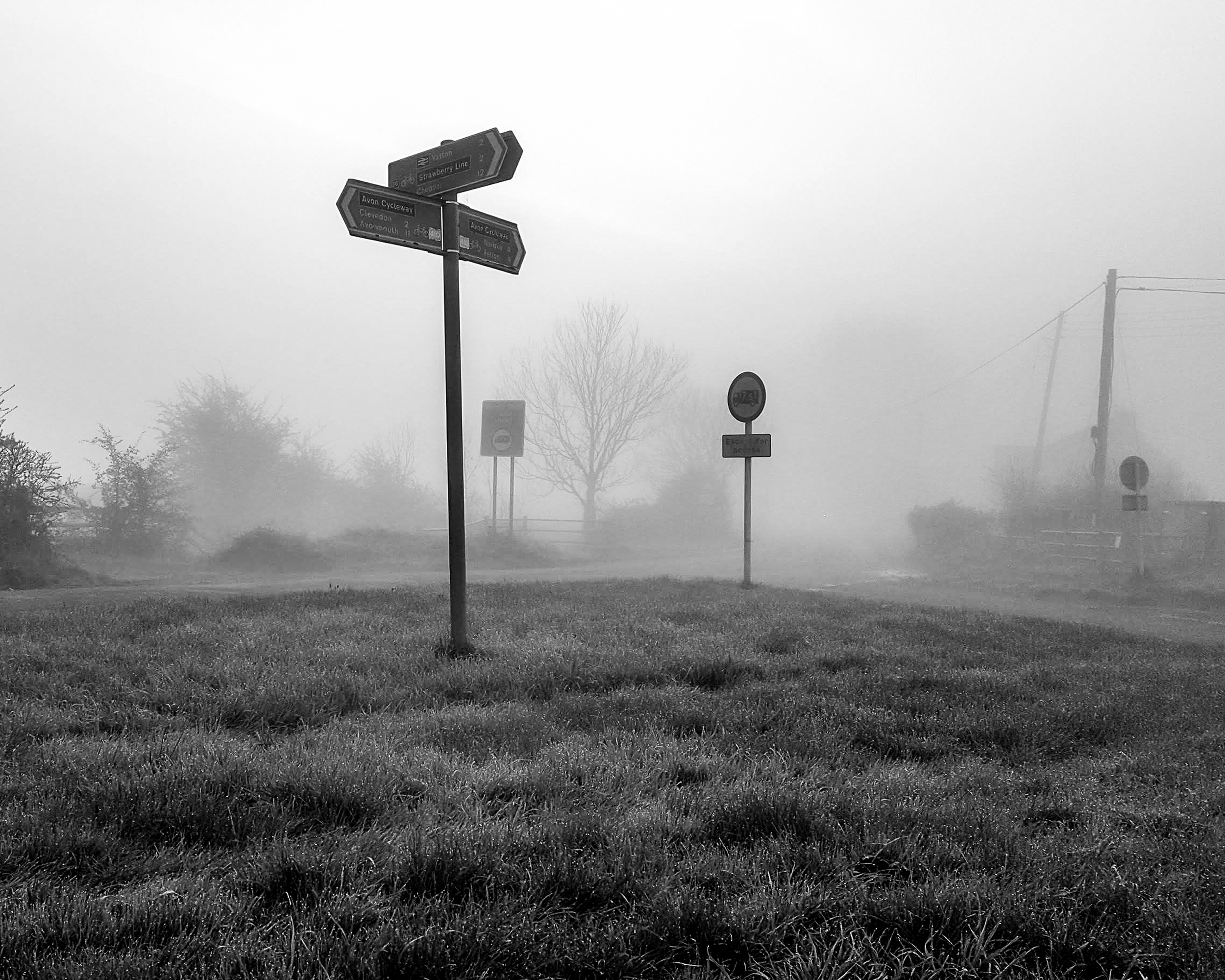
Our third image is one of possibilities. This beautifully composed image is reminiscent of the post-conflict work of Sir Don McCullin, arguably Britain’s greatest photographer, who Rahmatalla amusingly describes as his ‘local rival’. The dark shadow of violence, death, and destruction does not hang over this image in the way that I would argue it does over McCullin’s, but this image is rich in metaphor. Whilst the main sign quite literally shows directions, it also poses questions for us. Where will we go? What will we do? This future is hidden in the fog, and the picture’s questions are not easily answered.
Robert Adams subtitled his book Beauty in Photography as Essays in Defence of Traditional Values. Whilst I am sceptical about most forms of conservatism both socially and politically, this essay is my small attempt to contribute to the defence of these values in photography. I accept that a cogent argument could be made that my tolerance of traditional styles of image manipulation and rejection of more colour saturating methods is hypocritical. It may be that my misgivings about modern landscape are unfair in many cases, and for this reason I have deliberately not named any of the talented individuals who produce this style of work. However, it is images such as those shared in this article that delight me most and that is the way I intend to keep it.

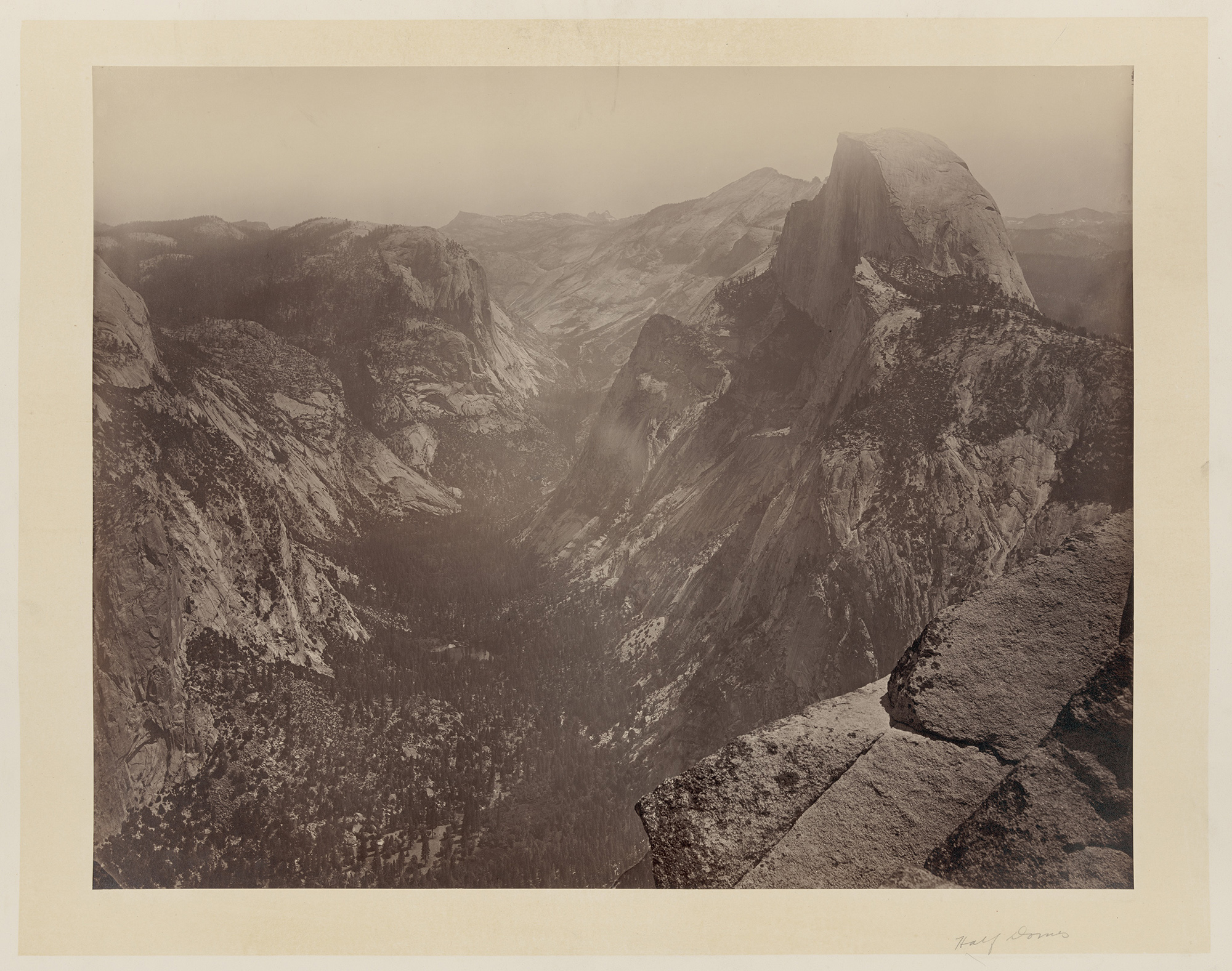

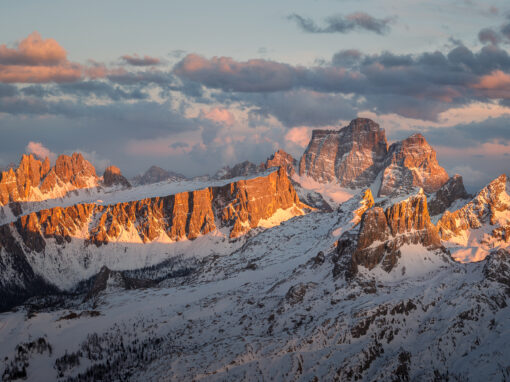
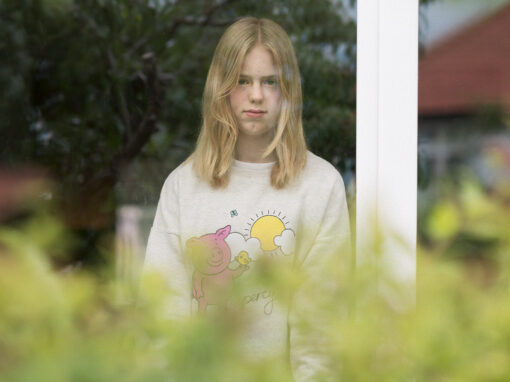
Renate
October 12, 2020 at 20:57
While I am not analytical like you, Rob, too often I look at an image and think”I’ve seen this before” and lose interest. Your article might help me to identify the “Why”.
,
Robert Wilson
October 12, 2020 at 23:13
I hope so!
Thank you!
Tim Gasper
November 6, 2021 at 10:09
Ah yes. And that is the most fleeting question to answer…..th “why.”
Ray
October 12, 2020 at 21:51
I totally agree. There is little originality in contemporary photography. Emulation is apparently easier than creation.
Robert Wilson
October 12, 2020 at 23:14
Definitely Ray.
Thank you.
Tim Gasper
November 6, 2021 at 10:12
Absolutely, but it has become more apparent to me, after seeing so many ’emulations’, that I tend to replace that word with…..regurgitation.
Rick Luiten
October 12, 2020 at 21:51
I have all but quit posting or looking at 500px for that same reason. So many of the landscape photos are amazing and eye catching but with further examination they tend to be like the Pepsi Challenge. You get that rush of sugar at first and caused you to pick it. The photos are so sharp, overly so. I like photographers who at at the spirit of a place, that is what I attempt to do but seem to always fall short but it is a worthy goal. To catch the spirit, the depth and life or death of a place is very hard and take openness to the environment. For me the greatest compliment comes when someone from the Indian Reservation that I grew up on tells me they can sense my connection to the earth, or I hear this from another photographer. It keeps me trying, I so far to go.
Robert Wilson
October 12, 2020 at 23:15
Thanks Rick.
I went even further and deleted my entire 500px portfolio.
I think you make an excellent point as well about that connection to the land.
Chuck Kimmerle
October 12, 2020 at 22:36
You speak for many of us, Rob. Few photographers want to think about a photograph, instead pinning creative value solely on prettiness.
Robert Wilson
October 12, 2020 at 23:16
Thanks Chuck.
I am happy that the article resonated.
Thinking about this whole subject makes me want to buy a 8×10 camera and shoot landscapes with it.
DEANNA SATRE
October 12, 2020 at 22:48
I respect Mr. Wilson’s attitude toward landscape photography, but here I most appreciate learning of Adams’s “geography, autobiography, and metaphor” and reading Mr. Wilson’s examples. Perhaps my search for meaning in photographs is similar to the need for metaphor. And for me it’s the most challenging of the trilogy.
Robert Wilson
October 12, 2020 at 23:17
Thank you Deanna.
Jerry Coupe
October 13, 2020 at 01:29
This article deserves more than one reading to fully understand all of its content. On first reading I feel a bit annoyed because to a certain degree it seems to imply that once a photo of Antelope Canyon is created and published then all others are simply copy cats. But to the individual photographer it could be the best and most cherished image in the portfolio.
As I continued to read I also tried to understand that there is also a challenge in the post for photographers to work at composition and creativity so that common scenes may be captured in some unique way. The article has challenged me.
Robert Wilson
October 13, 2020 at 14:24
Thank you Jerry. If I’ve made people think then that makes me very happy.
Etienne
October 13, 2020 at 02:57
Very well analyzed situation. The same thing is happening for a while now with travel photography, where people travel to the same locations to stage the same images of novice monks or fishermen. The same images with little to no difference, and not even a twist to make it interesting. And these images still Win photo competitions today…
Robert Wilson
October 20, 2020 at 14:08
Thank you Etienne!
Chris
October 13, 2020 at 07:45
Great to see such an article Rob, thank you.
I have become very disillusioned by what passes for contemporary landscape photography these days and as you say, even by what would be considered some of the supposedly ‘better’ photographers.
I expected this article might also touch on the dearth of composite imagery that seems to blanket all social media platforms these days and be widely accepted as ‘the norm’. In fact when I read the headline of the article, that’s what I thought it might be talking about. Sadly I feel photography for the most part – is currently a lot of mass average oversaturated nonsense, and has thereby also lost its soul. I was further reminded of this when recently sent a bunch of recent work by a photographer friend that still resolutely shoots on a Linhof wide format film camera, it was so breathtakingly beautiful, the images utterly exquisite in their detail and simplicity, properly crafted compositions, brilliant use of light, it was so wonderfully refreshing, and yet he feels a like a bit of a dinosaur and doesn’t think people will appreciate his fine work because it is so ‘off trend’ . Gasp.
I run a gallery that represents a few top local professional landscape photographers, and the biggest thrill I get is when members of the (non-photographer) general public come in, and are blown away by the works and can actually see and feel the difference between what they are seeing in the gallery and the nonsense that floods their media feeds. Sadly there are only a few who perhaps realise and truly appreciate the difference, but when they do it’s like they get an entirely different view of what photography should be.
Photography in this social media tourism age (before Covid changed the travel game a bit) has become far more about place I fear, than purpose, with the hordes all flocking to photograph the same places with infinite boring similarity and lack of much craft or creativity.
Thankfully there are still a few of what I guess we’d call purists out there, but you have to hunt a lot more to find their quiet and often exceptional work.
Robert Wilson
October 13, 2020 at 14:25
Chris, I could not agree with you more.
Cheers!
Robert Filippi
October 13, 2020 at 11:31
Well written, I totally agree.
Robert Wilson
October 13, 2020 at 14:25
Thank you!
bharat
October 13, 2020 at 11:56
Thank you. It was good to read your take on landscape photography. In recent years it has become a boring genre as more and more people travel to that far off scenic countries just that what other millions have already taken. In fact, I think there is a strong correlation between landscape photography and travel which had seen a boom pre Covid. Still, images of landscapes are reasonably well sought after. They are a safe bet when put on the walls!
I know of one landscape photographer who has not turned to wildlife.
Robert Wilson
October 13, 2020 at 14:26
Thank you for your thoughts Bharat.
George Hodgson
October 13, 2020 at 12:07
I would go even further going to a place to take the same photograph that has been displayed many times is to photography what painting by numbers is to art.
Robert Wilson
October 13, 2020 at 14:26
Excellent point!
Cheers.
Rita
October 13, 2020 at 14:06
Nature will be reported. All things are engaged in writing their history. The planet, the pebble, goes attended by its shadow. The rolling rock leaves its scratches on the mountain; the river, its channel in the soil, the animal its bones in the stratum ; the fern the leaf their modest epitaph in the coal.
One if my favourite pieces if writing by poet snd essayist Ralph Waldo Emerson.
I appreciate your words and they have catapulted me back to my roots. In the hustle and bustle of life we can get swept along with trends, the digital age allows us to manipulate images, the search for perfection, you only have to look at the images on instagram, perfect people with perfect lives, perfect landscapes, perhaps there is a need to escape the real world.
I like you, take joy in imperfections, the real things that we see, landscapes have been romanticised by artists, poets, and photographers throughout history, the way we see landscape is very personal to us, we see it through our own prism.
For my family it was to grow food and rear animals, but from an early age I loved the landscape around me, I live in a place with five Valleys, undulating and twisting land, fog in Autumn sitting in bowl like firmations, trees dripping with dew on cold mornings , snow covered ground that becones magical. I see nothing wrong in a photo taken on a dull day, as this was the reality.
I recently went to see Don McCullens landscapes and was captivated by their darkness and the high contrasrt, for me mirroring him, they could almost be called self portraits.
Thanks again.
Rita
Robert Wilson
October 13, 2020 at 14:27
Thank you Rita!
I agree completely about McCullin’s landscapes.
Anne O’Connor
October 14, 2020 at 00:21
I agree totally about what you say regarding the salon style of photographs which are all about perfection, composition and more. Within each is a wow o factor based on the ignition all hit, designed for the 2 minute judging. Other than that I am not seeing any emotion, romanticism or options to gaze longer and more. So many of the same.
One thing I don’t agree with is the use of the word contemporary to describe them. These works are not contemporary, they have expanded from the pictorialist style from many years ago and are all about competition.
The work you have shown here as examples that are not about pictorialism, but more about art and emotion.
True contemporary landscape has much to offer and runs rings around the continues repetition of over saturated, over sharpened and repetitive work growing in massive proportion.
Check out this page to see what is happening today
https://www.phototraces.com/creative-photography/best-landscape-photographers/
Robert Wilson
October 20, 2020 at 14:09
Thank you for your thoughts Anne.
Judi Neumann
October 15, 2020 at 13:49
Many images today are technically great and actually are stunning images that are enjoyed by viewers. As Anne says they are taken for salon style competitions or for social media where people only stay on an image for 2-3 seconds. So they actually meet the goal that they are taken for. I am open to this style of photography as well as being open to the thought provoking or emotive photography that you like. I find Ansel Adams work rather boring except for a few of his images. When studying his work I learned that his images were highly manipulated (not by himself but by his workers) in the darkroom. Nothing wrong with this but it sort of flies in the face of him comments. Michael Kenna’s work on the other hand is exceptional, thought provoking and very contemporary. Just my thoughts. I do enjoy reading other people’s views and thank you for posting your essay.
William
October 16, 2020 at 03:48
I look at a lot of landscape photos. Some speak to me, many don’t. It’s about the same as before. Art appeals to some but not everyone image by image.
Elizabeth Caroli
October 16, 2020 at 21:01
Hello Mr.Wilson, Thank you for your thoughts on cliche/trite landscape photography. I do hope I’m not misinterpreting your aim. I haven’t yet read the Adam’s essay, but I look forward to reading it a bit later today. I felt it necessary for me to reread your post a few times and then to wallow in these and other thoughts on photography, not only landscape. What I take away from your thoughts is that you lament the lack of equivalence in much of today’s images. Landscape creative photographer and writer Guy Tal defines equivalence as “the expression of subjective notions by way of objective aesthetics”. The Antietam photo is an excellent example, I believe. Guy Tal also writes that “equivalence is the most difficult and venerable skill a photographic artist can achieve.” I can attest to that and often fall short, but will not give up. I also think we live in a time when there is a huge commodity for aesthetically pleasing images, but I personally find that most leave me wanting more, wanting that personal glimpse into what the image meant to the photographer.
Robert Wilson
October 20, 2020 at 14:10
Thank you for your thoughts Elizabeth.
I hope you enjoyed the Adams article!
Leo Germano
October 17, 2020 at 04:30
This is very well done, and well put. It is reassuring that honesty and truth prevail at the highest level of appreciation and study. We ARE inundated by so much imagery, that there is the chance that work well done and worthwhile is smothered in numbers of banality, but that overall honesty and purpose prevails.
Even in like numbers. It’s karmic, in a way. The overcolored, and simplistic opportune photos need to happen in order to get to the real gems. And there are plenty, again, even in their great numbers.
Robert Wilson
October 20, 2020 at 14:11
Thank you for your thoughts Leo!
Charles "Duck" Unitas
October 20, 2020 at 03:47
While I get what you are saying here, I think you are being slightly disingenuous by comparing the general masses of picture takers to those who are purposefully trying to create something new and original. Yes, Antelope Canyon has seen countless tourists taking the same shot from the same angle ad nauseum. That should never be the reason for the next photographer that comes along from getting the same shot. Because, after all it is THEIR image, not someone other photographer’s, that matters, regardless if it is part of the ad nauseum noise of copycat works.
Competition to break out of the mold is high, as it should be. Without the noise of similarity how are we to recognize the true stand outs? OR as they say, you can’t break the mold if you don’t have a mold to break.
I also feel this same comparison of mass photography to individual standouts shouldn’t be used as the framework for Robert Adam’s “three verities” because for one, that is just one person’s requirements for a photograph to meet. Two, not all photographs want or need to meet those three requirements. It’s all about intent. While practiced masters may strive for those goals (if they are important to them) the less motivated photographer may not care about them and are approaching their landscape photography with a completely different set of rules. Unfortunately art is very subjective and open to viewer bias. I feel that if you have to dig too deep into an image in order to understand it you are just being pedantic. An artist’s message, if carefully crafted, should come easily to the viewer. I will say however, that education does inform how easily or concisely a viewer can interpret an image. Great images, if you study them, have levels that tend to reveal themselves on closer inspection and further understanding. Often so much more than just geography, autobiography, and metaphor. History, social commentary and emotional implications are some other criteria that can be measured. To me, those hold greater value than, for example, metaphor.
But that’s just my two bits. 🙂
Robert Wilson
October 20, 2020 at 14:16
Thank you for your thoughts Charles. I always appreciate thoughtful disagreement.
I can quite assure you that there is nothing disingenuous here. I am just writing what I think and feel.
I also don’t agree that art should necessarily be easily understandable. For me, there is great pleasure to be found in spending time unpicking a difficult or challenging image.
Jonathan Higham
October 20, 2020 at 11:31
Very well written and thought provoking article. I think I have now seen thousands, not hundreds, of sea shots at dawn with a long shutter releases causing a beautiful effect on the ocean. Curiously, popular though these kind of shots are, it’s not something we actually see in the moment with the naked eye. As I live not far from the sea I thought to take a similar shot over the years but never got round to it, and now I struggle to see the point unless I have a particular story to tell of my own.
I love the three mantras in this article, which I didn’t know about but I will now think more of them as I go out and about. I just finished a Master’s degree and in fact used photography as a method to deliver my project. The best comment I had in the two years was from my tutor who said, ‘do something only you can do’.
Emulation is a great temptation but finding your own voice is far harder – but ultimately more rewarding
Robert Wilson
October 20, 2020 at 14:22
Thank you for your thoughts Jonathan, and congratulations on the MA. Was it in photography?
Jonathan Higham
October 21, 2020 at 11:33
Thanks Robert! No it was in (bit of a mouthful) ‘Sequential Design in illustration’! But I did a lot of photography in my degree years ago and although I’m always taking pictures, I have never used it professionally or as part of my graphic artist work. So I wanted to do that in my MA – Can be seen here if interested: https://www.jonhigham.co.uk/a-life-in-objects
Best – Jon
Lauri Novak
October 22, 2020 at 17:19
You are not alone. I don’t even have any desire to visit Antelope Canyon and my desire to visit Iceland has withered a bit because of all the unoriginal, non-creative images I see and have seen. Over photographed, over-touristed.
How can I see this and photograph it differently? What is a way no one has photographed this before? Both questions I ask myself as I approach almost any subject I photograph. If I feel like an image is going to be just another copy of what’s out there I tend to put my camera down and enjoy the moment or I push myself hard to find a different way.
I also deleted my 500px account – it was of no real value to me and when it was taken over that just solidified my decision.
My friends tease me about not going out with them for sunrise/sunset and I tease them back about taking just another sunrise shot over Lake Michigan. I’d rather spend that time being in that amazing moment when the morning starts or the day ends.
Robert Wilson
October 27, 2020 at 22:19
Thank you for your thoughts Lauri!
I think that is a good approach.
Richard Hudson
July 29, 2021 at 19:11
You’ll be amused by how I found this excellent essay, asking Google “Why are Robert Adams photographs so boring?” I was reading his book, What Can We Believe Where? and felt that so many of the images lack any distinction. They seemed like random, unskilled snapshots taken with little thought or intent. (For reference, a few of my favorite photographers are Alec Soth, Lucas Foglia, William Albert Allard, and, of course, Walker Evans, Robert Frank, and William Eggleston.) I admit that Adams’ best-known images of the urban encroachment of in the West are striking and thought-provoking, although I still remain somewhat baffled by many of the New Topographics photographs.
But I nonetheless must thank you for reminding me of Adams’ “three verities – geography, autobiography, and metaphor,” which I had read but forgotten. Like many amateur photographers, I too have chased salon-worthy landscapes in my travels and workshops over the past several years, making my own copies of the countless images of Moulton Barn, Two Jack Lake, Dead Horse Point et al. I learned Lightroom and Photoshop and produced a few images that I am proud of and that have garnered awards. But I find them ultimately empty. I no longer participate in camera club salons. The opinions of the judges are typically unsophisticated, ignorant of photography’s rich history, and only reinforce the trivial pictorialist “rules.” Rarely do they examine photographs for deeper meaning, mystery, or metaphor.
So I am delighted to discover the Frames community, the stimulating articles and thoughtful comments. I have subscribed to the magazine and look forward to my first issue. Thank you!
nic
September 5, 2021 at 12:52
There is so much ‘visual noise’ generated by social media these days, that more and more I turn off the sources. More and more I am drawn to images combined with text, where the image has a backstory, a reason, a narrative.
Tim Gasper
November 6, 2021 at 10:23
I don’t know if it’s just me, but it seems that after the onset of our digital age, I have begun to lose interest in photography anymore. I grew up with analog and I respect the discipline of studying the subject matter I want to share and hope to convey the story that subject has to tell us. To include the ideal composition in which to portray the story’s full effect. These days it appears that anyone with a camera has an instant PhD. Well, they can keep their ‘PhD.’ I will continue to search for a story. Or just be satisfied with an essay.
Steve Coron
February 29, 2024 at 18:44
Truth?
I concur wholeheartedly with Tim Gasper.
Tell a story with discipline and finesse.